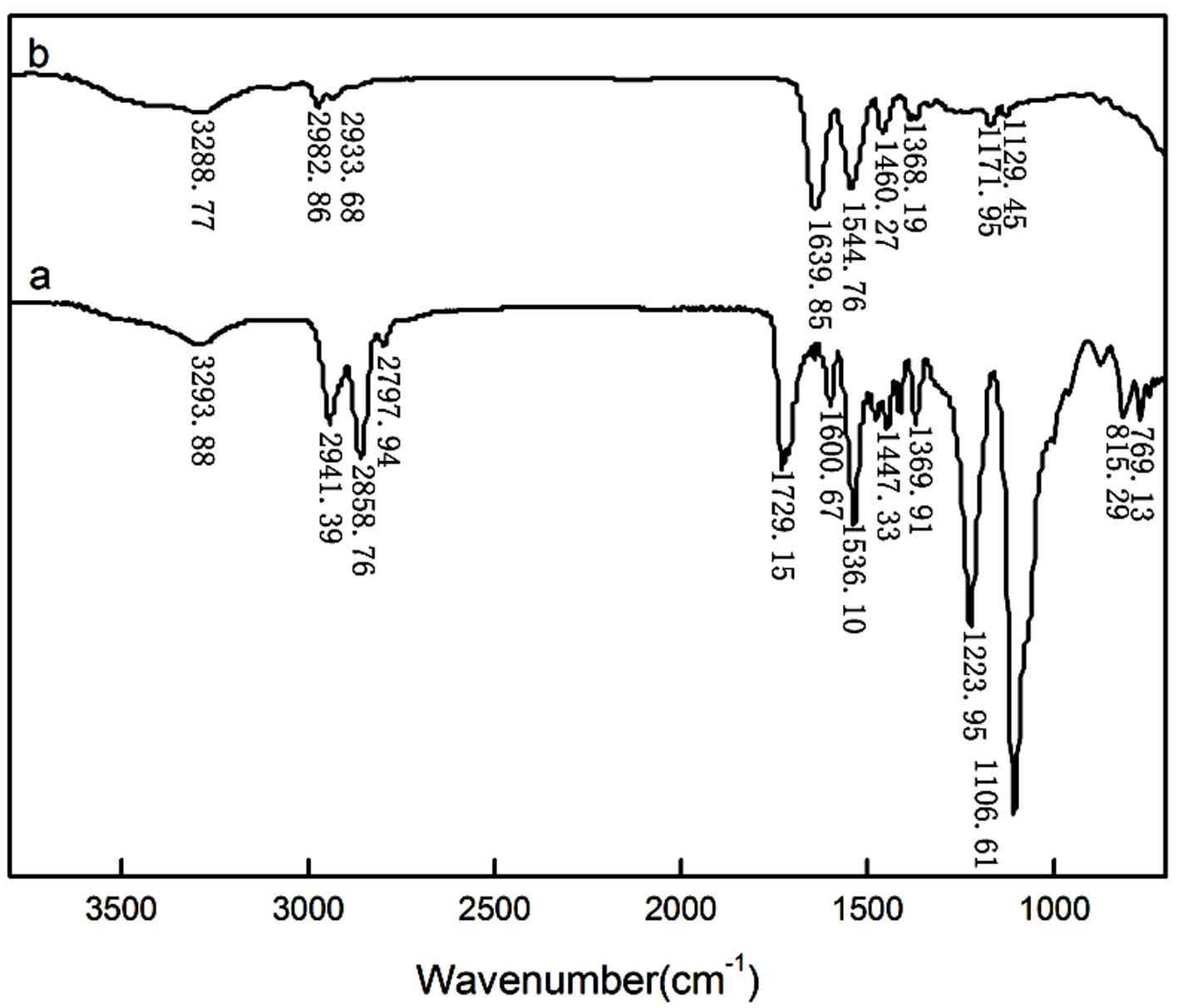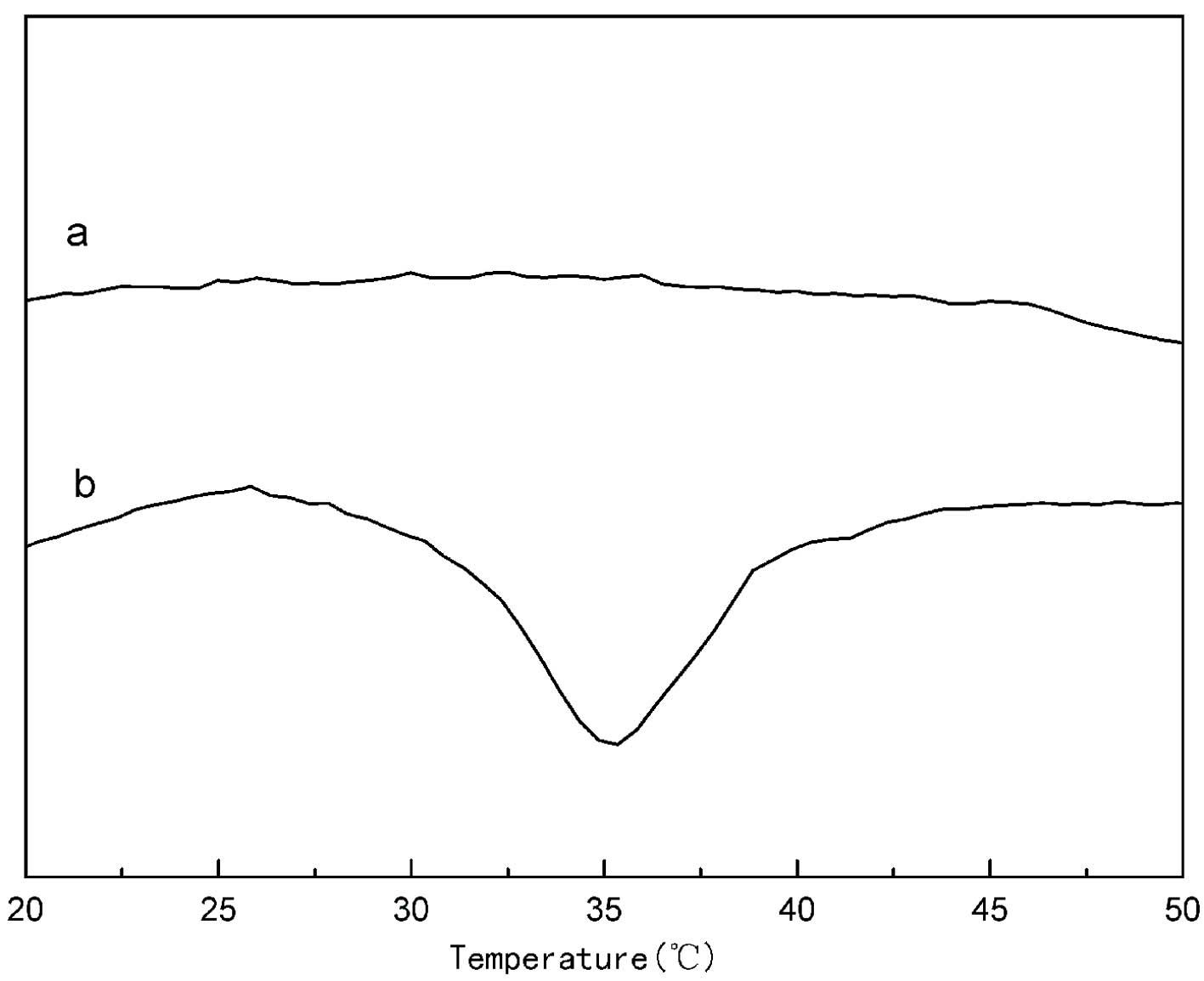Artificial skin alternative material and preparation method thereof
A technology of artificial skin and polyurethane materials, applied in medical science, prosthesis, etc., can solve the problems of easy penetration of pathogenic bacteria, easy shedding, delayed wound healing, etc., and achieve good mechanical and physical properties, satisfactory performance, and good mechanical properties.
- Summary
- Abstract
- Description
- Claims
- Application Information
AI Technical Summary
Problems solved by technology
Method used
Image
Examples
Embodiment 1
[0032] Add isophorone diisocyanate with an NCO / OH molar ratio of 1.35 and polytetrahydrofuran ether 1000 into a four-neck three-neck flask, pass condensed water during the reaction, adjust the stirring speed to 800~1000r / m, add 2 drops of stannous octoate Catalyst, prepolymerized at 75°C under nitrogen protection for 6 hours, then added 0.2mol of small molecule chain extender 1,4-butanediol, and continued to react for 3 to 4 hours until the reaction system basically contained no NCO functional groups. Observe the viscosity of the system during the reaction, and if necessary, add an appropriate amount of DMF to adjust the viscosity of the reaction system, so that the reaction can be maintained in a steady state. After the reaction is completed, the temperature is lowered to form a film to obtain a PU film.
[0033] Poly N-isopropylacrylamide (NIPAAm) was prepared into a 5wt% solution with deionized water, and 1wt% ammonium persulfate initiator was added to N-isopropylacrylamide...
Embodiment 2
[0036] Add diphenylmethane diisocyanate with an NCO / OH molar ratio of 1.25 and ε-polycaprolactone diol 1000 into a four-neck three-necked flask, pass condensed water during the reaction, and adjust the rotation speed of the stirring rod to 800~1000r / m .. Under nitrogen protection, dimethylethanolamine (3 drops) as the catalyst, polymerize for 4 hours at a temperature of 75°C, then add small molecule chain extender ethylene glycol (0.1mol), and continue to reflect for 3~4 hours until NCO reaches the specified value. During the reaction, the viscosity of the system needs to be observed, and a small amount of N,N-dimethylformamide is used to adjust the viscosity. After the reaction is completed, the temperature is lowered to form a film to obtain a PU film. NIPAAm was dissolved in deionized water to configure a solution with a mass fraction of 4 wt%, and a potassium persulfate initiator with a mass of 0.8% of NIPAAm was added thereto. Soak the PU film in 0.5% 1-hydroxycyclohe...
Embodiment 3
[0038] Add diphenylmethane diisocyanate with an NCO / OH molar ratio of 1.5 and ε-polycaprolactone diol 1000 into a four-neck three-neck flask, pass condensed water during the reaction, and adjust the rotation speed of the stirring rod to 800~1000r / m.. Under nitrogen protection, dibutyltin diacetate (5 drops) as the catalyst, polymerize for 4 hours at a temperature of 75°C, then add 0.5mol of hydrophilic chain extender dimethylolpropionic acid, lower the system temperature to 50°C, and continue the reaction 3~4h, until the NCO reaches the specified value. During the reaction, the viscosity of the system needs to be observed, and an appropriate amount of acetone is used to adjust the viscosity. Then lower the temperature to 20°C, add triethylamine to neutralize and form a salt, shear and emulsify in deionized water for 2 hours at room temperature, and finally remove the acetone in vacuum to form a film to obtain a water-based PU film. NIPAAm was dissolved in deionized water to...
PUM
| Property | Measurement | Unit |
|---|---|---|
| degree of grafting | aaaaa | aaaaa |
Abstract
Description
Claims
Application Information
 Login to View More
Login to View More - R&D
- Intellectual Property
- Life Sciences
- Materials
- Tech Scout
- Unparalleled Data Quality
- Higher Quality Content
- 60% Fewer Hallucinations
Browse by: Latest US Patents, China's latest patents, Technical Efficacy Thesaurus, Application Domain, Technology Topic, Popular Technical Reports.
© 2025 PatSnap. All rights reserved.Legal|Privacy policy|Modern Slavery Act Transparency Statement|Sitemap|About US| Contact US: help@patsnap.com



